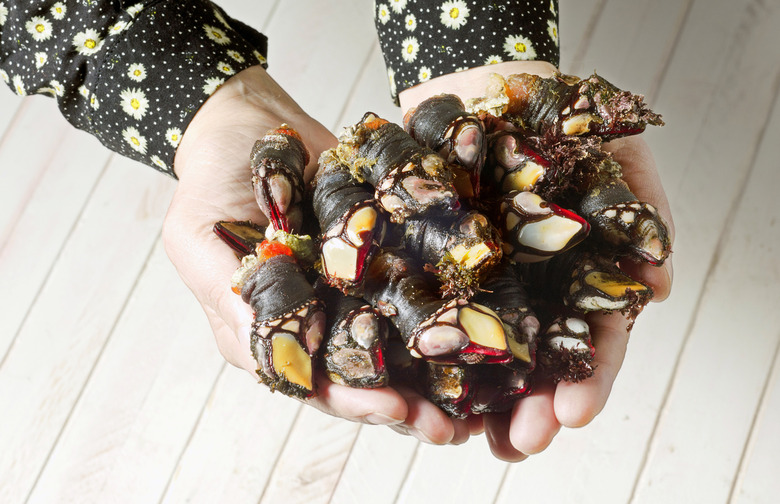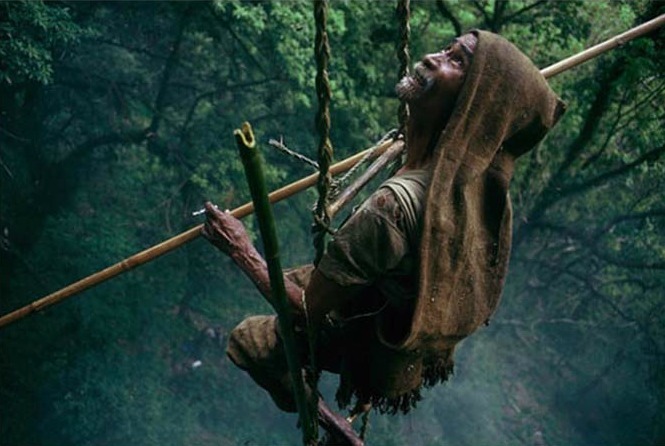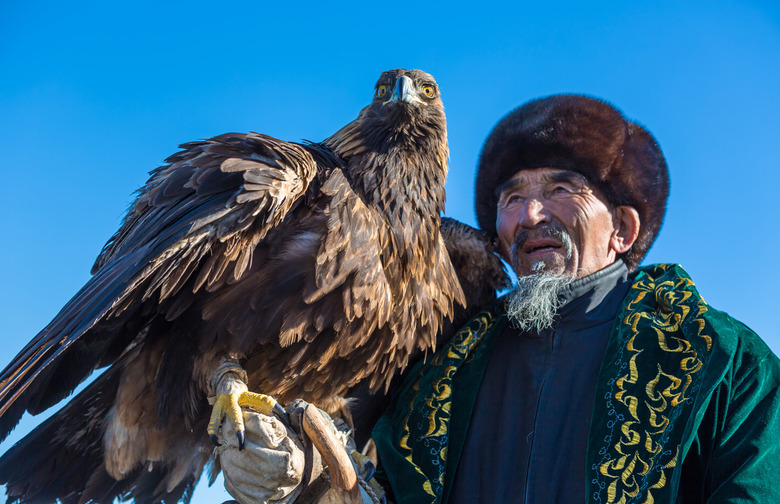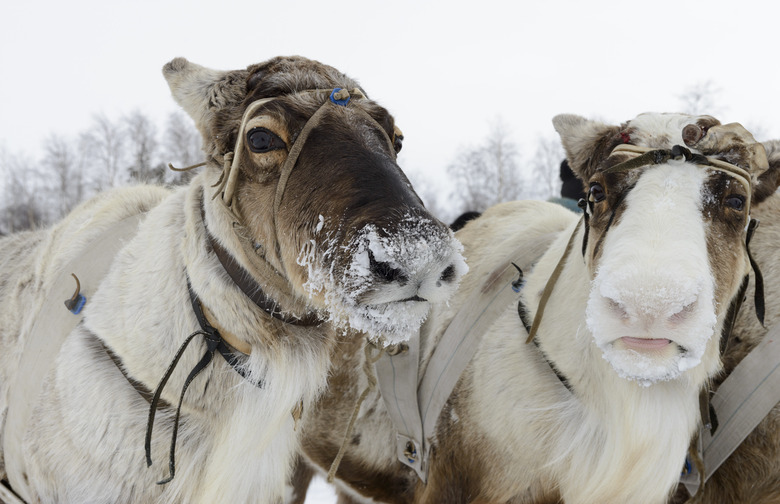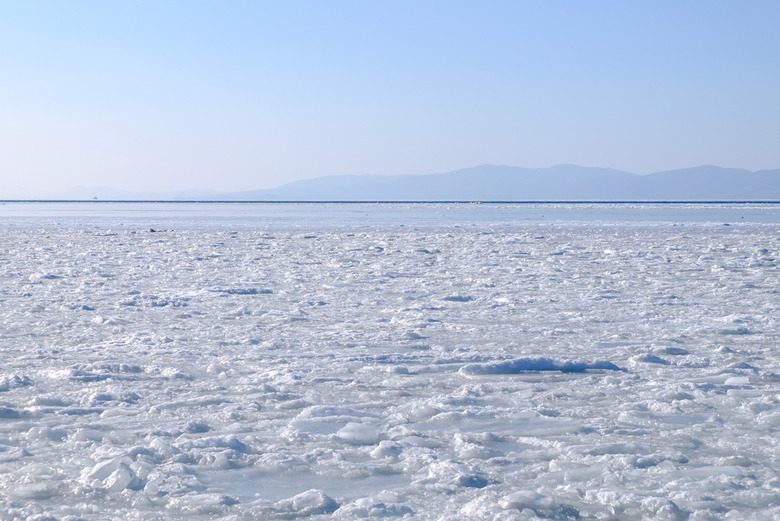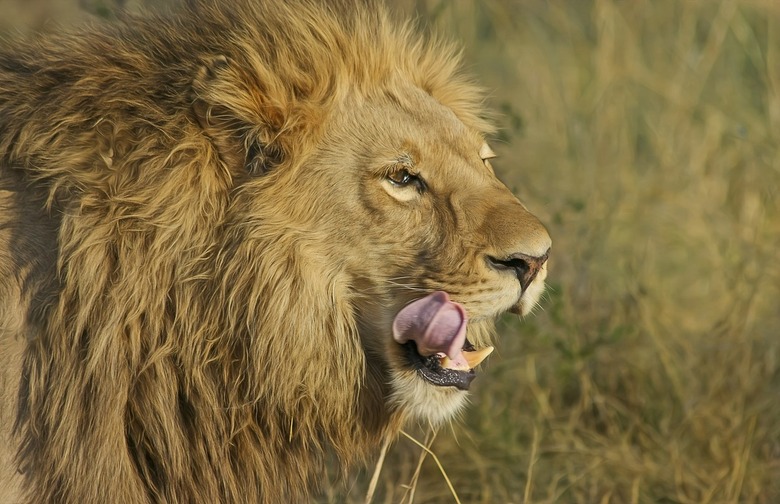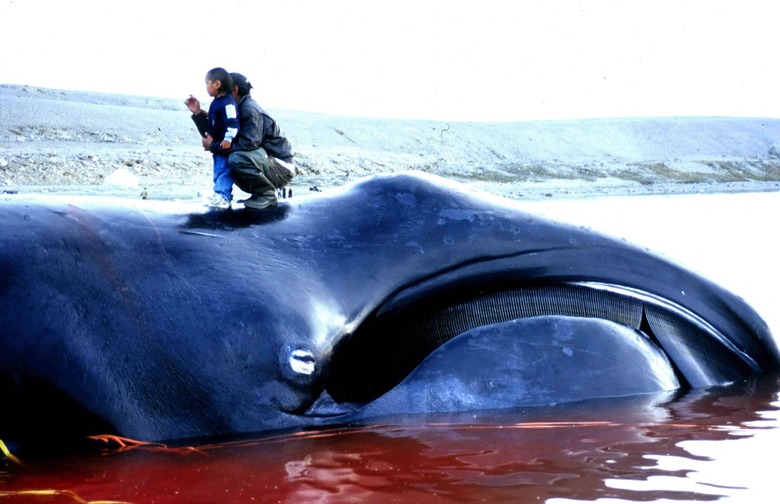You'll Never Believe These 8 Incredible Ways People Get Their Food Around The World (Slideshow)
Although barnacles are mainly known as a nuisance to sailors, they can also be a delicacy for diners. Goose barnacles (or "percebes"), once thought to be part of the mollusk family, are actually crustaceans, and have a sweet, succulent, and lobster-like consistency and flavor. Gathering them, however, is a difficult and dangerous duty. Three-person fishing teams along the rugged shoreline and rocky island outcrops of northwestern Spain obtain the barnacles via a complicated method involving ropes and rowboats. With one person manning the vessel, another ties a rope around his or her waist and takes up station on a rock near the water's edge. Using special tools, that fisherman then pries the barnacles free. The third fisherman grasps the rope from atop the rock as a safeguard, and watches for impending waves in order to warn his or her partner before he or she is hit with a breaker. Being swept into the sea is always a large possibility, but the reward — upwards of $80 per pound — is apparently worth it. For some people, at least.
Curious about how goose barnacles are prepared? Click here for a surprisingly quick and easy recipe.
Honey Hunting While Hanging From Cliffs, Asia
India, Nepal, and Bangladesh are all situated in the same region, which is a prime place to get some honey — if you're up to the incredibly arduous task. Unfortunately, it's not as simple as walking down to a manmade hive and harvesting the product, but instead involves scaling and hanging from enormous cliffs. The "Mawals," as they are called, climb a handmade rope ladder — some of which are 200 or 300 feet in the air — while hunters below light a fire and attempt to use the smoke to sedate the bees (but we hope not the climber). While enduring stings, the hunter on the rope uses two eight-yard-long bamboo "tango" sticks to literally bust up the hives like they are piñatas. However, only one tango is for smashing; the other has a basket that is used to catch the falling fragments.
The process is so dangerous that each harvest begins with a prayer ritual and sacrifice of flowers, fruits, rice, and oftentimes a sheep — and even if hunters escape a fall, there are still hungry tigers in the area searching for some food of their own.
Hunting With Eagles, Kazakhstan & Kyrgyzstan
Hunting with eagles is a traditional form of falconry that is still practiced today by the people of Kazakhstan and Kyrgyzstan, as well as portions of Mongolia and China. The bird of choice is the golden eagle, but northern goshawks, peregrine falcons, saker falcons, and others can also be utilized. The training is a long, time-consuming process that takes years to perfect, but the technique is simple. The birds fly around until they spot their prey (generally foxes and hare), and descend on the animals, using their beaks and talons to kill or injure, or at least alert its trainer of the location. If the animal is small enough, the eagles can even bring their prey right to the trainer.
In the first week of October every year, 70 eagle hunters gather for the Golden Eagle Festival of Mongolia, which is part heritage celebration and part competition. Prizes are awarded for speed, agility, accuracy, and even the best dressed trainer.
Reindeer Castration the Old-Fashioned Way, Siberia
If you queasy easily — especially if you're a male — you might want to skip this one. Here it goes: In Siberia and other parts of the Arctic, reindeer are incredibly important, especially to the nomadic Sami people. The reindeer are used for both transportation (pulling sleds) and as livestock, with about 70 percent of the 2,000 annual tons of reindeer meat sold to slaughterhouses. However, with very limited medical resources in remote areas of the Arctic, the Sami have had to invent their own techniques for raising the biggest, strongest herds. One technique has been immensely successful, yielding males that are larger, more muscular (and stay in shape easier), better at digging for food, more willing to share their bounty with calves, and keep their antlers for longer — but it's a bit controversial. As opposed to full castration, which can excessively limit necessary testosterone production, the Sami instead opt for "half-castration," which has been proven to be quite successful. The process involves the Sami biting into the reindeer's testicles with their teeth, which is quick and effective, allows the aforementioned production of testosterone without adverse effects, and limits the chances of infection. And if you thought this was a dignified medical procedure, I hate to burst your bubble, but it actually just involves roping and pinning a reindeer before the Sami simply sink their teeth into the animal's nether regions.
Sea Bed Hunting, Southeast Asia
The Bajau people of Southeast Asia live a seaborne lifestyle on many islands in the Philippines, Indonesia, and other parts of the region, and are renowned for their fishing abilities. However, this activity isn't always done with a rod and reel, and often involves actually diving into the depths themselves. In fact, the Bajau spend so much time in the water that they often get landsick. (Seriously.) Using spears or spear guns (and occasionally while wearing simple goggles), these fisherman descend to depths of over 50 feet and can literally walk on the bottom of the ocean. Combating the immense underwater pressure and the natural desire to breathe, the Bajau can spend up to five minutes below the surface on a single breath — sometimes only for a single fish.
Searching Under Ice for Mollusks, Canada
This next one isn't for the claustrophobic. Along the northern coast of Canada, the tides are so extreme that the level of the sea ice (the enormous chunks of frozen water that form the top layer of the ocean) drops up to 40 feet during low tide, and the hunt begins. The native Inuit people then have 30 minutes to slip through an open fissure (or create their own narrow passage by digging) and crawl along the newly-exposed floor below to gather as many mollusks as possible — all of this while the massive ice ceiling above shifts and groans ominously. When the half hour is up, the water floods back into the caverns, covers everything below, and fills up the recently dug hole. If the hunters can avoid the collapsing ice and returning waters of certain death, they'll likely emerge with a hearty food supply to hold them over until the next hunt. See the process for yourself here.
Stealing From Lions, Africa
Hunting for wild animals can be difficult, but the Masai people of Kenya and Tanzania have come up with a simple solution to this problem. They just wait for a lion to catch its prey, and then steal the food from the lion. Easy, right?
Surprisingly, it is actually pretty simple (as this YouTube video from the BBC shows), albeit with a hell of a risk involved. After the lions do the heavy lifting, a three-man team walks up to the hungry pack (which can number upwards of a dozen lions) mid-meal with confidence and purpose. They carry bows, but do not aim them at the animals or make any threats. When the predators scatter, the men quickly cut off as much meat as possible before the rightful owners return for revenge.
Whaling With Aborigines, Indonesia
Whaling has been banned worldwide since 1986, with the only exception being the type carried out by aboriginal groups on a strictly subsistence basis. That may still upset some people, but boy do these aboriginal folks earn it: There are no harpoon guns, GPS, or other advanced technology involved — heck, they don't even use motorboats most of the time. Instead, hunters watch for whales from the shores of the Lamalera and Lamakera islands in Indonesia, and upon spotting one, they take to the water and approach the massive mammal in small paddleboats. After reaching it, the lead harpooner (called a lama fa) leaps into the ocean while simultaneously throwing his bamboo, iron-tipped spear. From there, the others join in on the harpooning until they have bested the beast, which they then drag to shore. Of course, there's a high probability of things going awry, as boats routinely get smashed to smithereens, hunters drown, or sharks show up after sensing the blood. If the hunters succeed, the bounty can be quite rewarding; if they fail, it means going hungry, assuming they haven't already died in the process.
